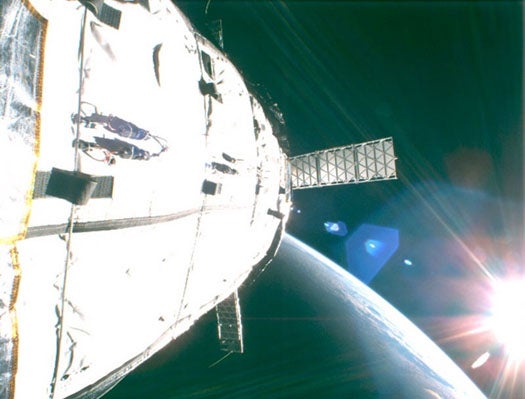Space Hotel Company May Provide Inflatable Expansion Module For ISS
Think Robert Bigelow’s much anticipated, sometimes ridiculed idea to build an orbiting space hotel from inflatable, habitable modules is something...

Think Robert Bigelow’s much anticipated, sometimes ridiculed idea to build an orbiting space hotel from inflatable, habitable modules is something of a pipe dream? NASA apparently doesn’t think the technology is bunk. The space agency is reportedly in talks with Bigelow Aerospace to acquire one of its expandable modules for installation on the International Space Station.
That’s big news for both NASA and Bigelow. The Vegas-based aerospace firm has been working since 2009 to create inflatable space habitats for its own hotel as well as for corporate clients and government space agencies, going so far as to propose concepts for inflatable moon bases. It has launched two orbiting prototypes, Genesis I and Genesis II, but so far no government or corporate entity has bought into Bigelow’s technology.
NASA, for its part, is looking for inexpensive and proven ways to expand the usable space aboard the ISS. A Bigelow Expandable Activity Module (BEAM) could do exactly that. NASA has already evaluated the possibility of robotically attaching a BEAM (somewhat larger than the Genesis prototypes) to the ISS, likely to Node 3.
No deal has been penned yet, but if one is it will not only mark an important partnership between NASA and the commercial space industry—the mission to install the BEAM would take 24 months to prep, meaning the Shuttle program would be long retired and a commercial carrier would have to ferry it to the ISS—but a huge milestone for Bigelow. The Genesis prototypes have already proven the sturdiness and durability of non-rigid aluminum structures in space; an endorsement from NASA and its international partners would naturally be huge.
[SPACE]